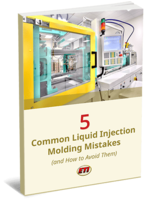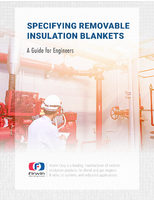Pressure Sensors / Detectors / Transducers
Pressure Sensors are built for sub-sea level measurement.
Share:
Press Release Summary:
AST 4000 Series, constructed with all-316L stainless steel wetted parts, survives sub-sea environments. Even where oxygen levels are low and water movement continuous, one-piece construction with diaphragm membrane free of welds and O-rings minimizes pitting and crevices of sensor. Wet, pluggable connector completely seals electronics. Sensors provide gauge, sealed gauge, or compound gauge pressure measurement in ranges to 10,000 psi and offer accuracy of less than +0.5% BFSL at 77°.
Original Press Release:
Pressure Sensors Constructed for Sub-Sea Level Measurement
Sub-sea level measurement can be accomplished with the use of a pressure sensor. Typically an ROV (Remotely Operated Vehicle) is lowered into the ocean with a pressure port either installed inside an enclosure or completely exposed to the sea water. As the ROV is submerged, water pressure is exerted on the diaphragm of a pressure sensor. The deeper the system is submerged, the higher the pressure. By calculating salt water density at 1.025 (or 2.5% more dense than fresh water at 4°C) a correlation between pressure and output signal can be made to measure equipment depth.
For example, when a pressure sensor is packaged with a pressure range of 0-5075 PSI (350 Bar) and a 4-20mA output signal, the pressure sensor will read 0 PSI or 4mA at the surface. When the sensor is submerged with the equipment, the pressure will increase along with the linear output signal up to 20mA at a depth of approximately 12,000 feet (3657.6 meters). This is calculated by: (5075 PSI x 27.68 inches of water column x 1.025 density)/12 inches = approx. 12,000 feet
Construction is Key for Pressure Sensor Survival
Pressure sensors submerged in sea water need certain mechanical considerations to survive the corrosive environment. American Sensor Technologies packages its AST 4000 Series of Pressure Sensors with all 316L stainless steel wetted parts including the pressure sensing element, housing and electrical connection to survive sub-sea environments. Even deep in the ocean where oxygen levels are low and water movement continuous, pitting and crevices of the AST 4000 Pressure Sensors are minimal due to its construction.
Because the AST 4000 Pressure Sensors have a one piece 316L construction and a thick diaphragm membrane without any welds or O-rings, sensors are ideal for sea level measurement. The diaphragm is thicker, leading to longer life, as there is no potential leak path, and only one material to consider.
Pressure sensors that employ a separate diaphragm than the pressure port must ensure wetted materials of the pressure port are compatible with stainless steel.
Electrical termination is also a key factor for sub-sea applications. AST 4000 Series Pressure Sensors use a wet, plug gable style connector that can withstand 10,000 PSI of pressure. Made of 316L material, it completely seals the electronics of the pressure sensor. The threaded connector is made with gold contacts and glass reinforced epoxy to maintain media compatibility and long-term use.
The AST 4000 pressure sensors provide gauge, sealed gauge or compound gauge pressure measurement in ranges up to 10,000 PSI. Sensors are calibrated and temperature compensated to ensure stability over specified ranges. Units offer accuracy of < + 0.5% BFSL at 25ºC (77º F) and long-term stability of +0.25% full scale output per annum. Offering a wide range of options for OEMs, system integrators and end-users, AST 4000 pressure sensors can be constructed as a millivolt output pressure sensor, amplified output pressure transducer, or 4-20mA loop powered pressure transmitter using MEMS technology.
For additional information, please visit American Sensor Technologies website at www.astsensors.com/pressure_sensors_and_transducers/AST4000 or email at info@astsensors.com.




